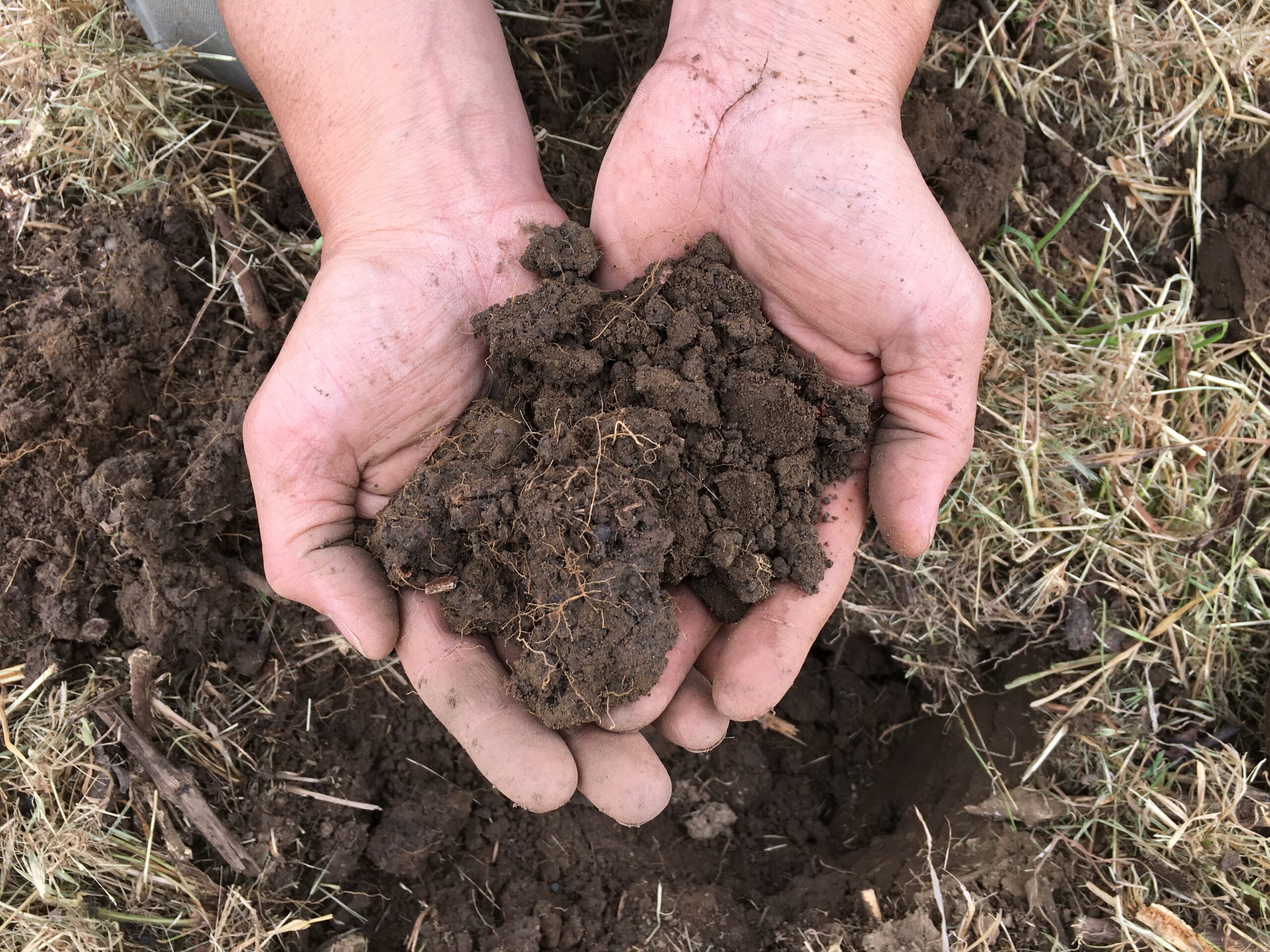Soil Health
Irrigation
Resources
Contact
Farmers are continually trying to increase farm resiliency, stay ahead of the regulatory curve, save money, and enhance marketability

General Info
Napa RCD is collaborating with several partners through the North Coast Soil Health Hub to work toward these goals through identifying the co-benefits of improved soil health in soils and agriculture specific to the North Coast.
According to the Natural Resource Conservation Service “soil health is the continued capacity of soil to function as a vital living system, within ecosystem and land-use boundaries, to sustain biological productivity, promote the quality of air and water, and maintain plant, animal, and human health. Only “living” things can have health, so viewing soil as a living ecosystem reflects a fundamental shift in the way we care for our nation’s soils. Soil isn’t an inert growing medium, but rather is teaming with billions of bacteria, fungi, and other microbes that are the foundation of an elegant symbiotic ecosystem. Soil is an ecosystem that can be managed to provide nutrients for plant growth, absorb and hold rainwater for use during dryer periods, filter and buffer potential pollutants from leaving our fields, serve as a firm foundation for agricultural activities, and provide habitat for soil microbes to flourish and diversify to keep the ecosystem running smoothly.”
Healthy soil gives us clean air and water, bountiful crops and forests, productive grazing lands, diverse wildlife, and beautiful landscapes. Soil does all this by performing five essential functions:
- Regulating water – Soil helps control where rain, snowmelt, and irrigation water goes. Water and dissolved solutes flow over the land or into and through the soil.
- Sustaining plant and animal life – The diversity and productivity of living things depends on soil.
- Filtering and buffering potential pollutants – The minerals and microbes in soil are responsible for filtering, buffering, degrading, immobilizing, and detoxifying organic and inorganic materials, including industrial and municipal by-products and atmospheric deposits.
- Cycling nutrients – Carbon, nitrogen, phosphorus, and many other nutrients are stored, transformed, and cycled in the soil.
- Physical stability and support – Soil structure provides a medium for plant roots. Soils also provide support for human structures and protection for archeological treasures.
How can I get involved?
Visit soilhub.org to read the latest on this project and to sing up for the newsletter. Contact us if you are interested in conducting a soil health assessment on your vineyard or if you would like to learn more about soil health.
Contact
Sustainable Agriculture Program Manager
(707) 690-3122
Soil Health Assessments Services
On a fee-for-service basis, RCD is now offering Soil Health Assessments to Napa grape growers to evaluate:
- Macro nutrients – the standard crop fertility test
- Biological properties – including organic carbon and microbial activity
- Physical properties – water holding capacity, compaction, infiltration, and aggregate stability
RCD’s qualified staff and regional partners will design a sampling strategy in your vineyard, conduct the field work, and assist you with interpreting soil analyses results to make sound soil management decisions. View link for suite of lab and field tests included in the RCD’s assessment.
RCD is partnering with Oregon State University (OSU) to conduct the lab analysis. OSU is one of few labs in the country that provide tests based on nationally adopted soil health metrics.
Funding: National Association of Conservation Districts and Natural Resource Conservation Service
